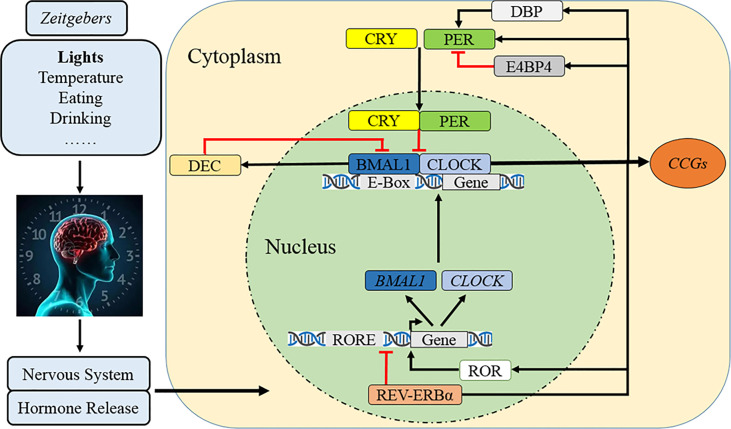Figure 1.
Molecular mechanism of the circadian clock. After cues from Zeitgebers are transmitted to SCN as electrical signals, the circadian clock rhythm is orchestrated by a set of genes and proteins which forms interlocked positive and negative feedback loops. Specifically, CLOCK and BMAL1 constitute the core positive heterodimer complex (CLOCK/BMAL1) to activity rhythmic transcription of PER1/2/3, CRY1/2, and relevant clock controlled genes (CCGs). The repressors of PER and CRY accumulate and form a negative feedback loop in cytoplasm during the day and then translocate back to the nucleus to inhibit the level and activity of CLOCK/BMAL1. The complex of PER/CRY is also subsequently disassembled or resolved, while a new circadian cycle is also followed by another 24–h. Meanwhile, REV-ERBα reduces BAML1 transcription and RORα promotes it to manipulate the CLOCK/BMAL1 complex. The third loop involves that DBP induces PER transcription and lengthens the rhythmic period but E4BP4 exerts opposite effects, while DEC inhibits CLOCK/BMAL1-induced PER1 transcription.

